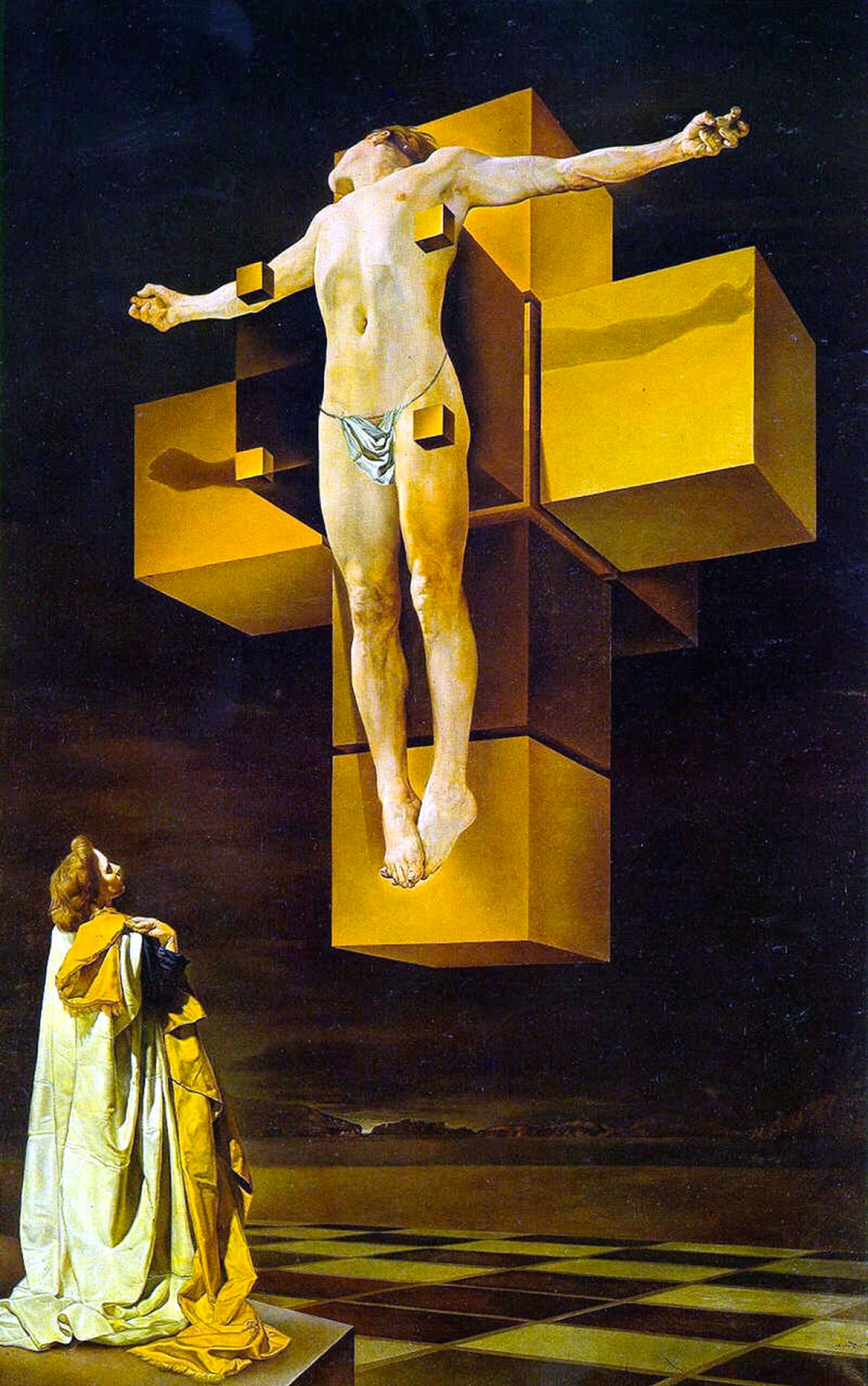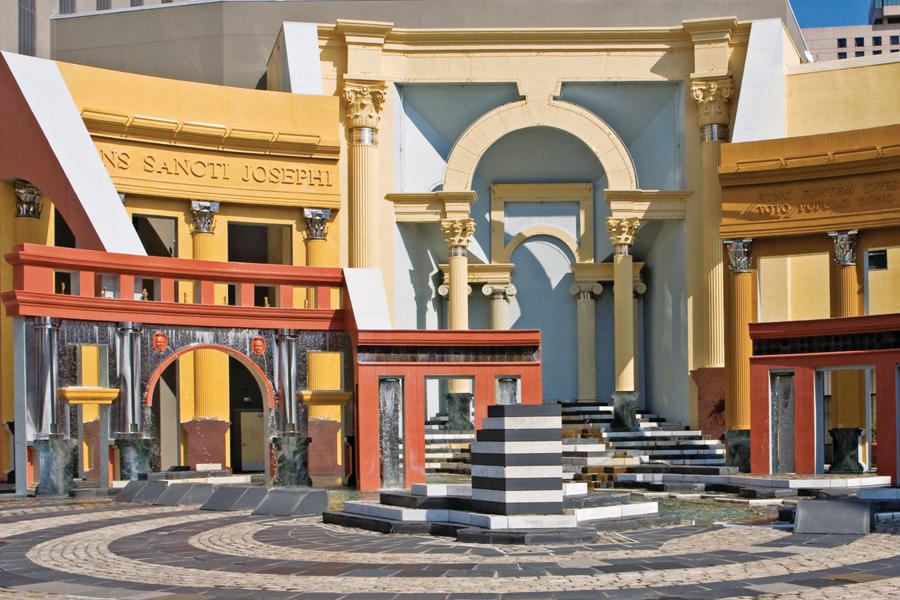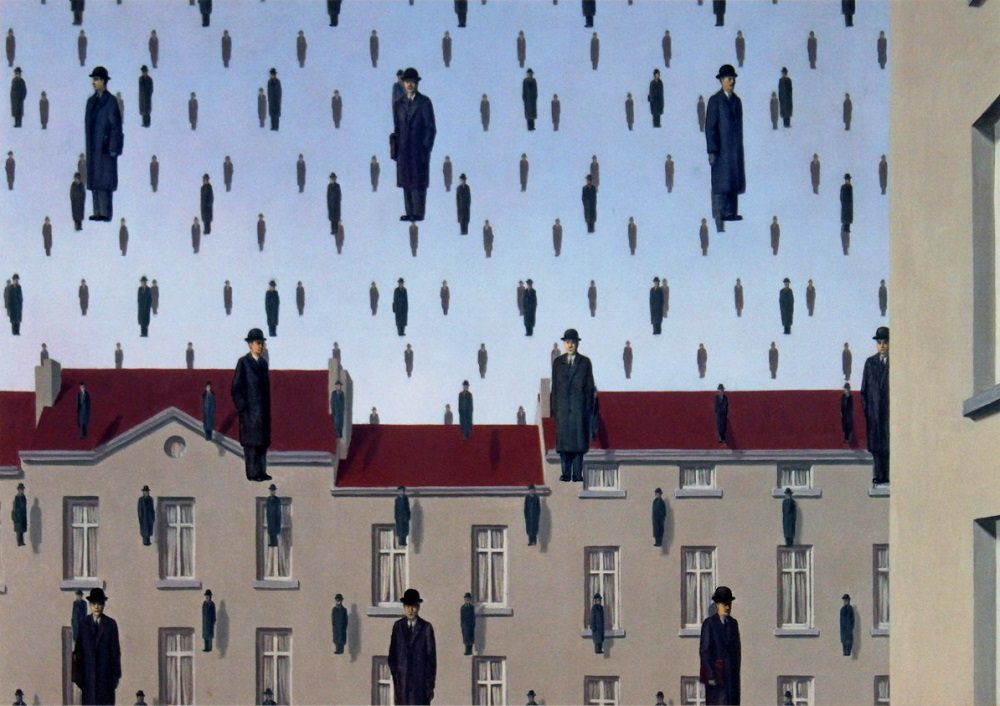99
Corpus Hypercubus
Author: Salvador Dalí
Year: 1954 Edit Add
Book: Postmodernism, or, The Cultural Logic of Late Capitalism
Corpus Hypercubus
Author: Salvador DalíYear: 1954 Edit Add
Book: Postmodernism, or, The Cultural Logic of Late Capitalism
The most vivid pictorial representation of the process is surely to be found in the so-called historicism of the postmodern architects, and above all in their relationship to the classical language, whose various elements -- architrave, column, arch, order, lintel, dormer, and dome -- begin with the slow force of cosmological processes to flee each other in space, standing out from their former supports, as it were, in free levitation, and, as it were, endowed for a last brief moment with the glowing autonomy of the psychic signifier, as though their secondary syncategoremic function had become for an instant the Word itself, before being blown out into the dust of empty spaces. Such flotation was already present in surrealism, where Dali's late Christs hovered over the crosses they were nailed to, and Magritte's men with bowler hats slowly descended from the skies in the form of the raindrops that determined them to wear their bowler hats and carry their umbrellas in the first place.
The most vivid pictorial representation of the process is surely to be found in the so-called historicism of the postmodern architects, and above all in their relationship to the classical language, whose various elements -- architrave, column, arch, order, lintel, dormer, and dome -- begin with the slow force of cosmological processes to flee each other in space, standing out from their former supports, as it were, in free levitation, and, as it were, endowed for a last brief moment with the glowing autonomy of the psychic signifier, as though their secondary syncategoremic function had become for an instant the Word itself, before being blown out into the dust of empty spaces. Such flotation was already present in surrealism, where Dali's late Christs hovered over the crosses they were nailed to, and Magritte's men with bowler hats slowly descended from the skies in the form of the raindrops that determined them to wear their bowler hats and carry their umbrellas in the first place.
 Source type: picture
Source type: pictureInfo: Corpus Hypercubus at Metropolitan Museum of Art, New York
Original size: 1300x2075 px. Edit
Golconda
Author: Rene Magritte
Year: 1953 Edit Add
Book: Postmodernism, or, The Cultural Logic of Late Capitalism
Golconda
Author: Rene MagritteYear: 1953 Edit Add
Book: Postmodernism, or, The Cultural Logic of Late Capitalism
The most vivid pictorial representation of the process is surely to be found in the so-called historicism of the postmodern architects, and above all in their relationship to the classical language, whose various elements -- architrave, column, arch, order, lintel, dormer, and dome -- begin with the slow force of cosmological processes to flee each other in space, standing out from their former supports, as it were, in free levitation, and, as it were, endowed for a last brief moment with the glowing autonomy of the psychic signifier, as though their secondary syncategoremic function had become for an instant the Word itself, before being blown out into the dust of empty spaces. Such flotation was already present in surrealism, where Dali's late Christs hovered over the crosses they were nailed to, and Magritte's men with bowler hats slowly descended from the skies in the form of the raindrops that determined them to wear their bowler hats and carry their umbrellas in the first place.
The most vivid pictorial representation of the process is surely to be found in the so-called historicism of the postmodern architects, and above all in their relationship to the classical language, whose various elements -- architrave, column, arch, order, lintel, dormer, and dome -- begin with the slow force of cosmological processes to flee each other in space, standing out from their former supports, as it were, in free levitation, and, as it were, endowed for a last brief moment with the glowing autonomy of the psychic signifier, as though their secondary syncategoremic function had become for an instant the Word itself, before being blown out into the dust of empty spaces. Such flotation was already present in surrealism, where Dali's late Christs hovered over the crosses they were nailed to, and Magritte's men with bowler hats slowly descended from the skies in the form of the raindrops that determined them to wear their bowler hats and carry their umbrellas in the first place.
Piazza d'Italia
Author: Charles Moore
Year: 1978 Edit Add
Book: Postmodernism, or, The Cultural Logic of Late Capitalism
Piazza d'Italia
Author: Charles MooreYear: 1978 Edit Add
Book: Postmodernism, or, The Cultural Logic of Late Capitalism
The Interpretation of Dreams was most often appealed to for motivation in the experience of weightlessness used to inscribe all these objects somehow together; that then endowed them with the depth of the psychic model or the unconscious, in ways quite alien to the postmodern and old-fashioned in its context. But in Charles Moore's Piazza d'Italia, and in many of his other buildings, the elements float loose under their own momentum, each becoming a sign or logo for architecture itself, which is thereby, needless to say, consumed like a commodity -- and with all the avid relish that accompanies such consumption -- in contrast to the role such elements were called upon to play, or most often repressed from playing, in a modernism anxious to resist consumption and offer an experience that could not be commodified.
The Interpretation of Dreams was most often appealed to for motivation in the experience of weightlessness used to inscribe all these objects somehow together; that then endowed them with the depth of the psychic model or the unconscious, in ways quite alien to the postmodern and old-fashioned in its context. But in Charles Moore's Piazza d'Italia, and in many of his other buildings, the elements float loose under their own momentum, each becoming a sign or logo for architecture itself, which is thereby, needless to say, consumed like a commodity -- and with all the avid relish that accompanies such consumption -- in contrast to the role such elements were called upon to play, or most often repressed from playing, in a modernism anxious to resist consumption and offer an experience that could not be commodified.
 Source type: picture
Source type: pictureInfo: Charles Moore - Piazza d'Italia - New Orleans
Original size: 900x600 px. Edit
 Source type: picture
Source type: pictureInfo: Charles Moore - Piazza d'Italia - New Orleans
Original size: 826x1200 px. Edit
 Log-in
Log-in Source type: picture
Source type: picture